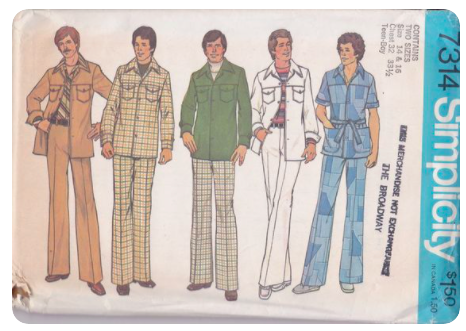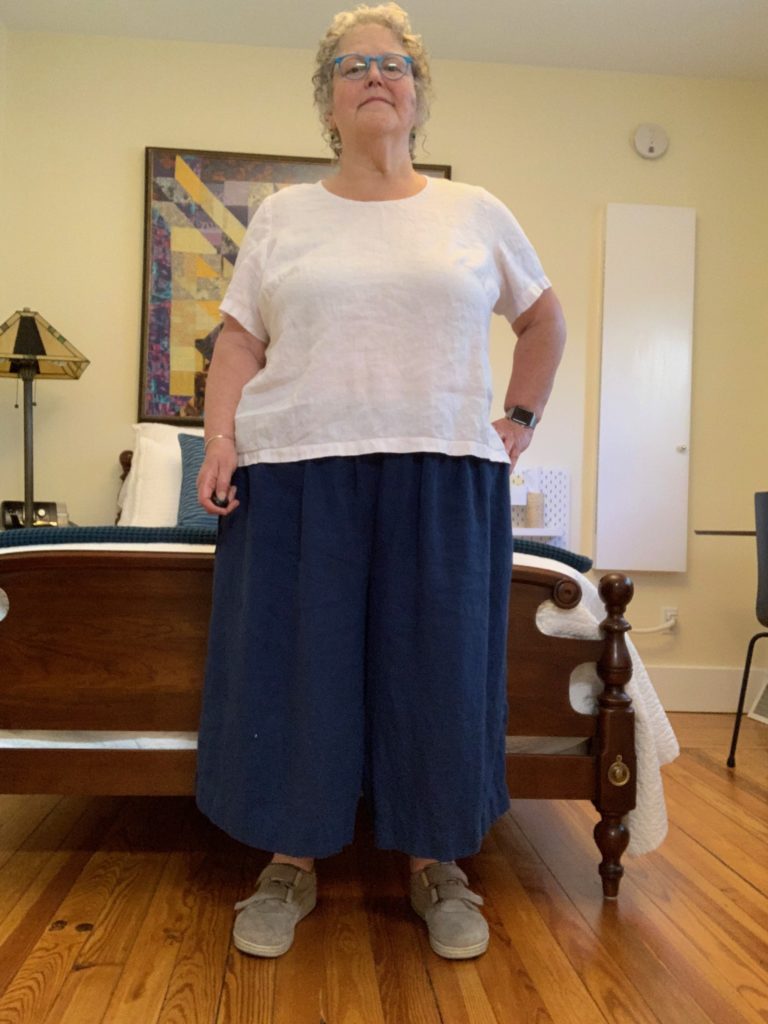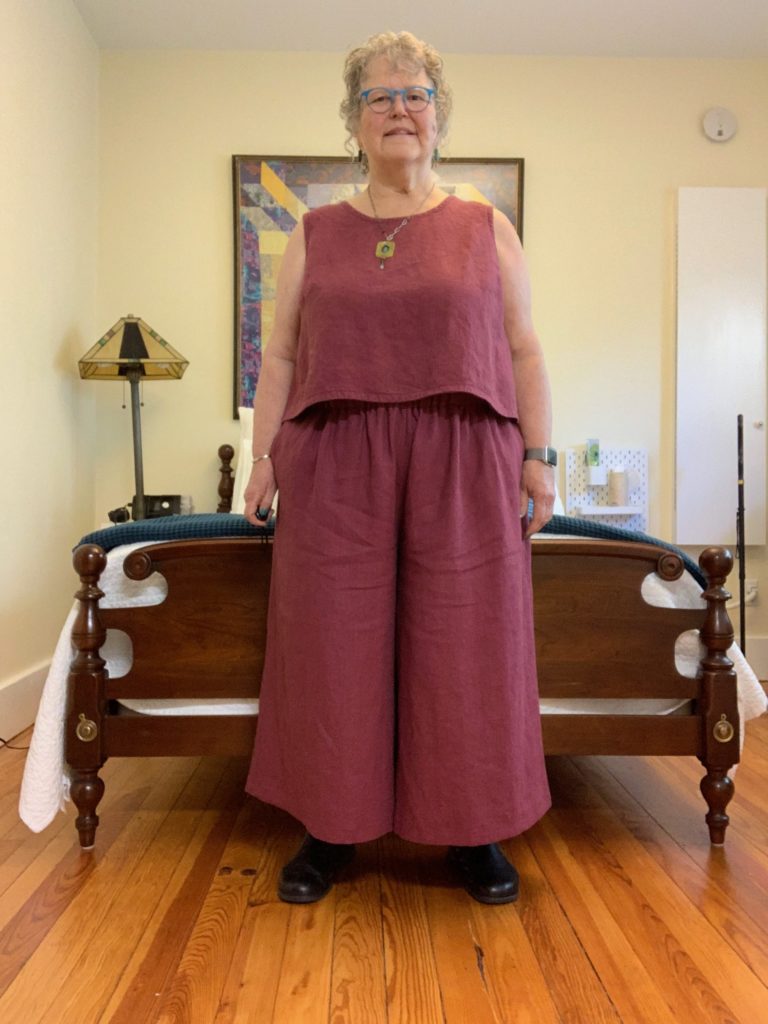My mother and her mother both were avid seamstresses (that’s what they were called in the 1950’s when I first learned to sew). My mother taught me to read and follow patterns when I was 7 (1957). She gave me a pattern to make clothes for my Madame Alexander Ginny doll and I was hooked.
I made my first dress for myself when I was 11 (1961). All through middle school I made clothes for myself. When I went to college, a sewing machine went with me and I sewed for myself and my friends. I majored in home economics education in college before dropping out to get married with only 18 hours to finish.
In college I learned pattern making and made polyester double knit suits for my husband and embroidered flowers on my bell bottom jeans (late 1960’s and early 70’s).

I continued to make my own clothes until my body began to expand, age and change. I became frustrated when the things I made didn’t fit. I knew how to grade patterns and used this skill but never with the level of success I wanted. I found a few RTW brands that fit me well enough and started making quilts.

I purchased a sewing machine in 2010 and began sewing clothes again. The machine was nothing special and it only lasted two years but it started a wonderful journey.

Around that time, I discovered the online sewing community. I became enamored with the young tatooed women who were making clothes like my mother used to make. Gertie @gertie18 inspired me http://www.blogforbettersewing.com/. As did Peter @peterlapin http://malepatternboldness.blogspot.com/ and Carolyn @diaryofasewingfanatic https://sewingfantaticdiary.blogspot.com/.

This was before Instagram. Blogs were a really big thing and I devoured what other sewists wrote. I took classes, even had a 1:1 class with Kenneth King. I worked hard to make clothes that fit but had only mediocre success.
The clothes I made fit better than RTW so in 2014, I made a pledge to stop buying RTW except for outer and under wear. I didn’t have many clothes but the clothes I had pleased me and brought me unsolicited compliments.

More garments I made landed in the trash than in my wardrobe. “Wadders” were the main thing I produced but I didn’t give up. I enjoyed the process of sewing as much if not more than the end result.

A few years ago, indie pattern makers began making clothes in my size. At first my measurements were near the TOP of their size ranges. The fit of what I made improved but I still had to do a lot of alterations such as FBA’s, rounded back, etc.

There was no way I could get a pair of pants to fit me. It was not for lack of trying. My measurements did not fit the Ninni Culottes, but after seeing an Instagram post of a pair on a body like mine, I tried the pattern. I’ve made many versions. This pattern has been my “pants’ pattern for several years.

Then in 2019-20 things suddenly changed. Pattern companies began to respond to the discussions on Instagram about the need for diversity and inclusivity in sewing patterns. I found indie patterns that fit me almost “off the printer”. Cashmerette, then Helen’s Closet, Closet Core Patterns and most importantly Muna & Broad create patterns that fit my body. The women behind these patterns place importance on making patterns for diverse bodies and it shows in what they produce. I am so grateful to the work they do and how it has made a difference in what comes off my sewing machine.
This Me Made May I will use their patterns and a few from Paper Theory, in developing a set of 20+ hackable TNT patterns.
